Artifacts -
Personal Items/Clothing
Click an artifact's image or name to view it.
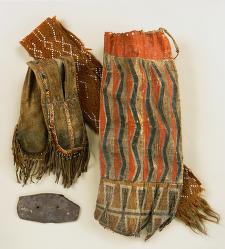
|
circa 1700 - 1750
These four objects (tobacco bag, red slate gorget, bullet or shot pouch, and sash) were given to Stephen Williams in the mid-18th century by Arosen, Eunice Kanenstenhawi Williams's husband. |
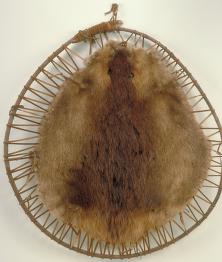
|
Modern reproduction
This modern beaver pelt is stretched on a circular wooden frame using methods traditional to Native Americans of New England. |
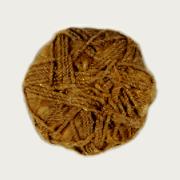
|
circa 1690
This passementerie button features a decorative design in silk thread over a wooden base. |

|
Modern Reproduction
This reproduction capot, a hooded coat, is representative of those worn circa 1690-1720 in French Canada. |
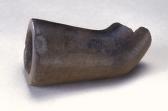
|
1000 BCE - 300 BCE
Ceramic pipes were made and used by Native Americans in the Northeast beginning about 3000 years ago. |
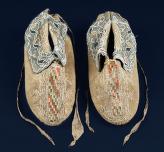
|
mid-17th century
This rare pair of 17th-century moccasins is decorated with silk ribbon, glass beads, and porcupine quills. |
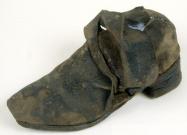
|
circa 1690
This rare example of everyday footwear of the late 17th century survived from a sunken ship. |

|
1660 - 1677
Glass beads were important items for trade between Native Americans and Europeans throughout the early colonial period in New England. |

|
3000 B.C.E - 0 B.C.E.
Native American gorgets like this one may have served decorative as well as utilitarian functions. |
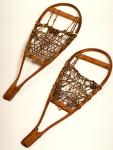
|
circa 1700
John Sheldon may have worn these snowshoes when he journeyed to New France to negotiate the release of his children and other captives taken in the 1704 raid on Deerfield, Massachusetts. |

|
Modern Reproduction
Winter moccasins were much more practical than English shoes for the long march to New France. |

|
circa 1690
This wooden pipe is one of a group of pipes recovered from a late 17th-century shipwreck. |
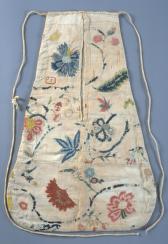
|
1760 - 1780
Women's pockets in the 18th century were detachable pouches that were tied by a cord around the waist. |

|
circa 1746
This Kanienkehaka (Mohawk) prisoner halter was found after the 1746 Bars Fight in Deerfield, Massachusetts. |

|
3000 B.C.E - 0 B.C.E.
This red slate gorget was reportedly given to Stephen Williams by his sister Eunice and her Kanienkehaka husband Arosen. |
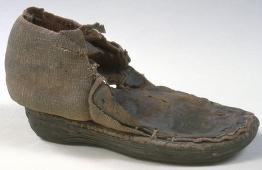
|
circa 1678
It is believed that this shoe was worn by four-year-old Sarah Coleman when she returned from captivity in New France after a 1677 attack on her town of Hatfield, Massachusetts. |

|
1700 - 1750
This finger-woven sash was both decorative and functional. |

|
circa 1750
Gorgets like this shell example with etched designs were worn as items of personal adornment by Native Americans. |

|
circa 1725
Decorated bags or pouches like this one were commonly carried by Native American men for tobacco. |

|
circa 1900
The long tails on these snowshoes acted as rudders for long distance trips like the march to New France. A person familiar with snowshoes could walk in them as rapidly upon the snow as without them on the ground. |

|
Modern Reproduction
Hooded cloaks like this one were intended to provide warmth and weather protection over full gowns. |
![]()
![]()